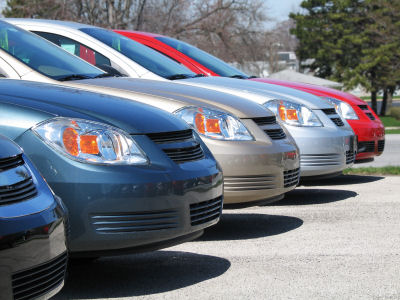Auto Insurance Guide
 If you’ve tried purchasing auto insurance recently then you will know how many different pieces of coverage there are. With all the customization options available for insurance coverage it is very important to know exactly what covers what, so you can be confident you are getting the right protection and not paying for anything you don’t need.
If you’ve tried purchasing auto insurance recently then you will know how many different pieces of coverage there are. With all the customization options available for insurance coverage it is very important to know exactly what covers what, so you can be confident you are getting the right protection and not paying for anything you don’t need.
Take the first step in purchasing auto insurance by entering your zip code into the quote box and receive free comparison quotes from all the top auto insurance companies.
Deductible
The deductible is the amount that you’ll pay in the event of an accident. It covers the first few hundred dollars of any repair bill. Usually you would pay in increments, with $250 being the lowest, then $500, then $750 and so on. The lower the deductible, the more the insurance company has to pay out in the event of an accident so the higher the premium. If you’re worried about avoiding a high repair bill then it may be worth paying the few extra dollars for a low deductible. If you are able to afford a higher deductible then the lower rates are definitely worthwhile.
Some companies offer a reduced deductible for not having an accident. This reduces the deductible for every year you don’t have an accident. If you’re a safe driver then take advantage of the vanishing deductible by having a larger deductible up front, paying a lower premium and letting your safe driving reduce the deductible for free.
Premium
The premium is the amount of money you pay to the insurance company every month or few months for coverage. It is often quoted as a yearly number and then broken down into quarterly or monthly installments. It is important to pay this on time, as otherwise you could end up without coverage when you need it.
Free Car Insurance Comparison
Compare Quotes From Top Companies and Save
Secured with SHA-256 Encryption
Liability
Liability coverage pays someone else for an accident in which you were at fault, or legally responsible. All states require drivers to carry liability insurance and the states set certain minimum amounts for the coverage people must have. However, these limits are very low and you should always be careful about not having enough liability coverage because you could be personally responsible for any expenses the insurance company won’t pay because they are over those limits.
Bodily Injury Liability
Bodily injury liability covers medical bills for people outside your vehicle who were injured in the accident. This could be other drivers, passengers or pedestrians. The limits are the maximum amount the insurance company will pay and it is quoted as two numbers. The first number is the maximum amount the company will pay to any one person and the second number is the maximum amount per accident.
Property Damage Liability
Property damage liability covers damage to the other cars and any roadside objects which were involved in the accident. Again, this is not an area to try and cut the premium as you could end up being responsible for any damage you do which costs beyond what the insurance company will pay.
Collision Coverage
Collision coverage covers damage to your own vehicle that was sustained as the result of an accident. Without this, an insurance company will only pay for damage done to someone else’s vehicle, not your own. Collision coverage carries a deductible and the amount of coverage you purchase depends on the value of the vehicle you own. If the car you are insuring is not worth a lot of money then you may not need collision coverage. However, if the car you are driving is worth a lot then collision coverage may be essential for ensuring a timely repair after an accident. A leased car often requires collision coverage.
Comprehensive Coverage
Comprehensive coverage also carries a deductible and covers damage to your car not caused by a collision. Damages such as a broken window, a stolen stereo or even a stolen car are not covered by collision coverage but they are covered by the comprehensive part. Comprehensive coverage also covers losses due to fire or flood. As with collision coverage, a car with a low cash value may not need this type of coverage.
Uninsured Motorist Bodily Injury
Uninsured motorist coverage covers injuries caused to you and your passengers in an accident that was not your fault, but in which the other driver was carrying no coverage or an inadequate level of coverage. As with all the other bodily injury limits, they are quoted as two numbers. The first is the maximum amount per person, while the second is the maximum amount per claim.
Uninsured Motorist Property Damage
The property damage part of the uninsured motorist coverage will pay for any damage caused to your car or your property if it is hit by someone without enough coverage. In some cases it is also used to cover damage done in a hit and run or while the car is parked. Make sure the limits are enough to cover the value of your car.
Personal Injury Protection
Personal injury protection pays for your medical bills and those of your passengers if you are found at fault in an accident. As with the liability coverage, it is quoted as two numbers. The first one is the maximum amount the insurance company will pay for any one person, the second number is the maximum amount the insurance company will pay for each accident. If you have children or typically travel with a lot of people in the car then make sure you have enough personal injury protection to cover them all.
Rental Car Reimbursement
 While your car is in the shop you still need to get to work and the grocery store. Rental car reimbursement will pay for a rental car for you to use while your car is in the shop. This type of coverage is relatively cheap and if your car ever needs to be in the shop for an extended period of time then a rental car will really help ease your stress.
While your car is in the shop you still need to get to work and the grocery store. Rental car reimbursement will pay for a rental car for you to use while your car is in the shop. This type of coverage is relatively cheap and if your car ever needs to be in the shop for an extended period of time then a rental car will really help ease your stress.
Emergency Road Side Service
Emergency roadside service offers assistance in the event of a break down. The exact coverage varies from company to company but it may cover a tow, gas delivery, flat tire assistance and other simple services. Pricing also varies and unless you do a lot of driving outside your home area in an older car, then this coverage may not be helpful.
Insurance policy quotes are complex looking things, but by breaking it down part by part they’re not too hard to understand. All insurance companies price the different types of coverage and the levels of coverage differently so it is worth shopping around to make sure you get the best deal possible for your money. Many companies also have local agents who will be able to help you find the perfect level of coverage for your situation.
Find your ideal auto insurance policy now by entering you zip code below!
